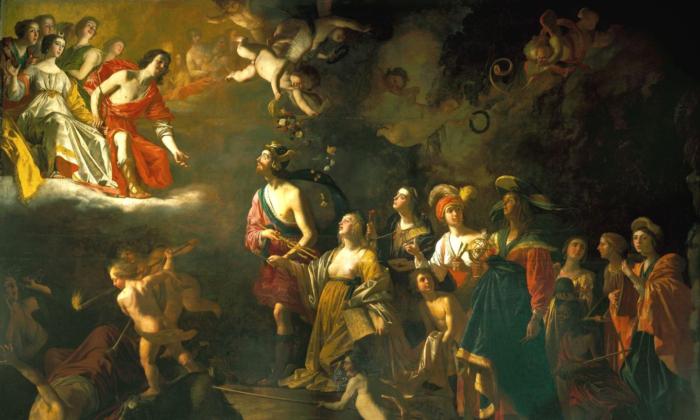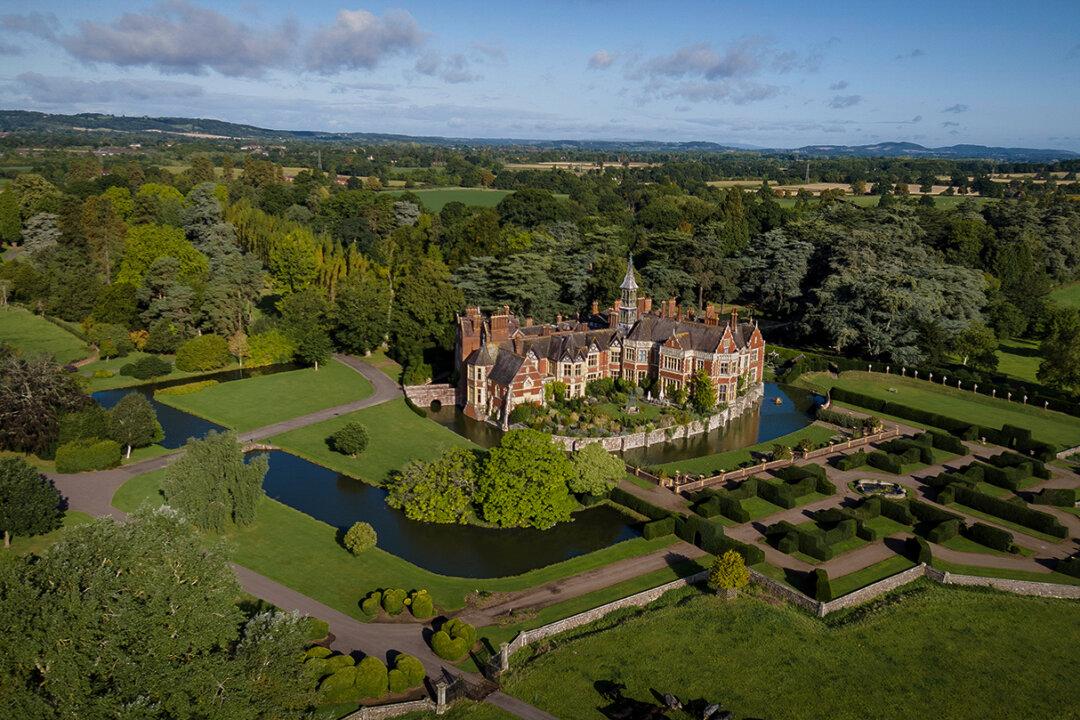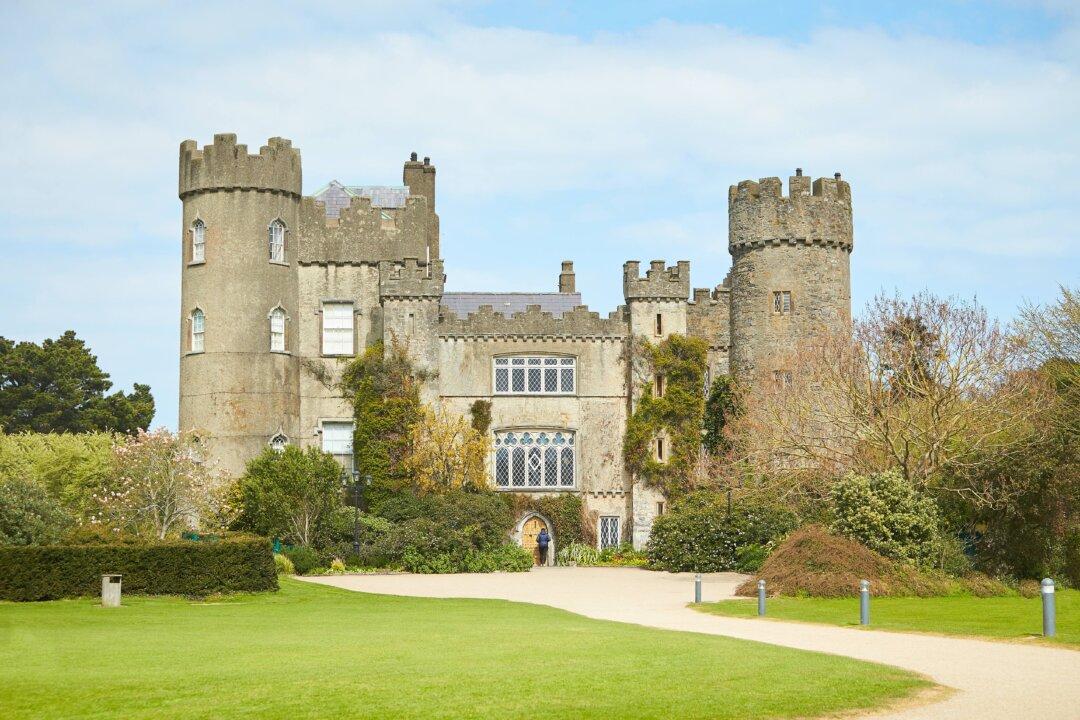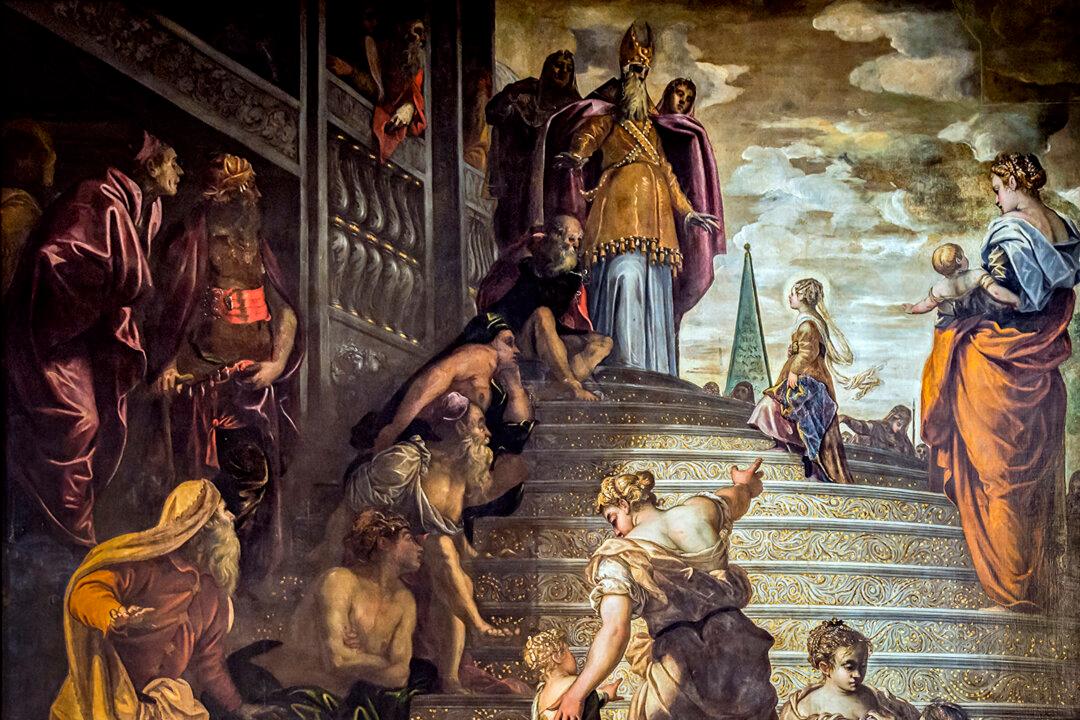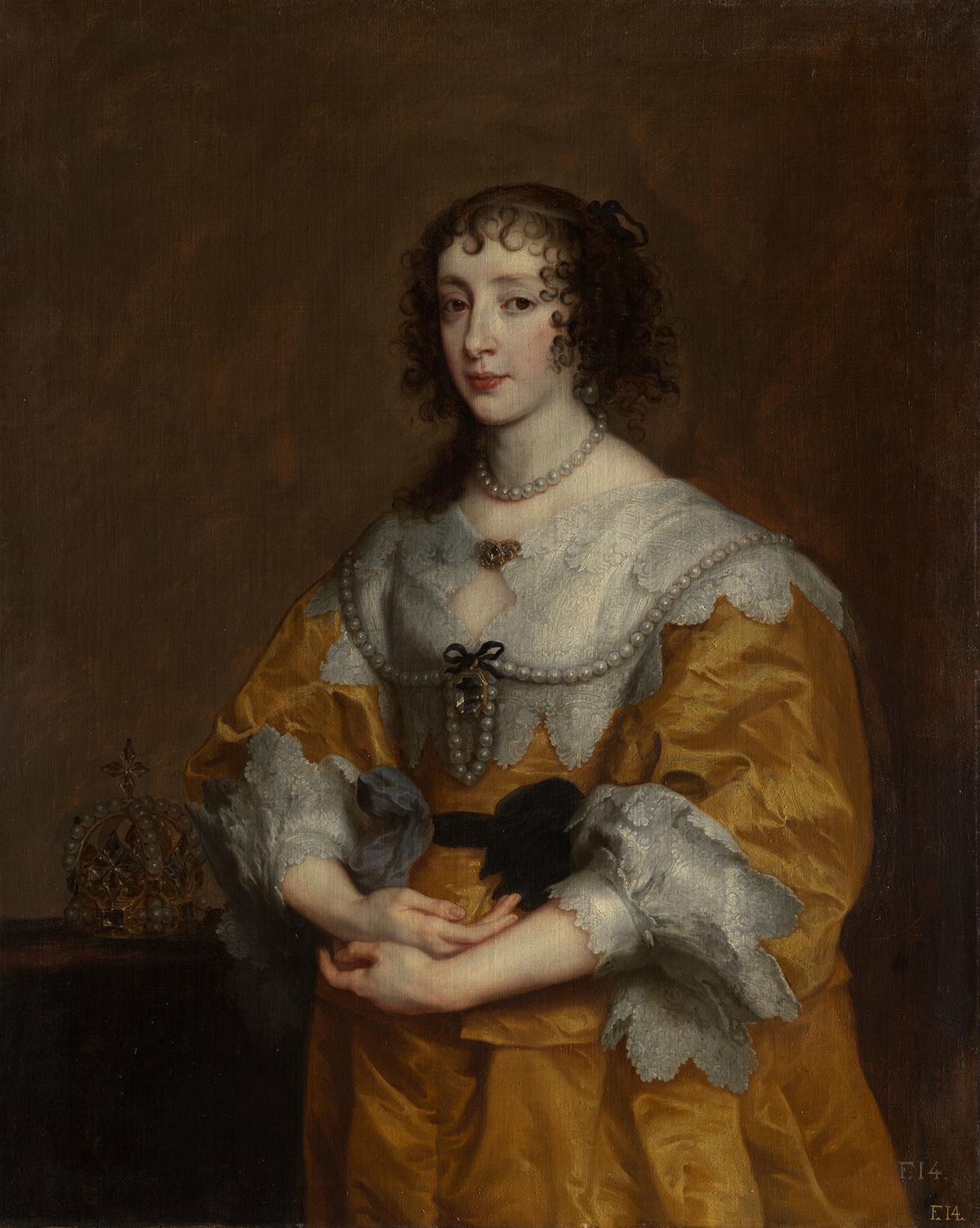
Lineage of Artistic Patronage
In the Anglophone world, Henrietta Maria is remembered simply as a French princess who became an English queen consort. Born a member of the royal House of Bourbon, she was the daughter, sister, and aunt of French kings. Her trip to England was her first outside of France’s boundaries.Following Royalist defeats in the English Civil War, she fled back to her native country in 1644 and remained until her son King Charles II restored the monarchy in 1660. She again returned to France in 1665 for the last time and died there four years later.
England was then in a very different cultural condition than her home country. Englishmen were just beginning to develop a serious interest in art for the first time in more than half a century. It was English literature that was blossoming and into its golden age with Ben Jonson and John Donne both actively writing—although Shakespeare had died a decade earlier. The architectural aesthetics of the era were also beginning to transition from the uniquely English Jacobean style to strict classicism.

The Queen’s Benefaction

Henrietta’s most extensive patronage was to English literature and theater. Her employment of James Shirley as playwright for her troupe of actors and her central role in the appointment of William Davenant as poet laureate are particularly notable. Ranking among the more talented and important minor playwrights, both were leading members of their profession in 17th-century England after the retirement of Jonson.
Davenant was to become one of the few links between English Renaissance theater and Restoration theater. He kept English theatrical tradition alive despite attempts to suppress it by the Puritan regime, which ruled from 1649 to 1660. Shirley’s use of smaller casts of characters than his more illustrious predecessors was a model that would be followed by the great John Dryden and become common practice.
Architecture is perhaps the field in which Henrietta’s patronage has been most famous. The Queen’s House (now part of the Royal Museums) was the first building in England that was built in a strict classicist style and one of Inigo Jones’s first major commissions. Henrietta’s most personal contributions—a side of her patronage that’s often overlooked—were the paintings she commissioned for the Queen’s House. Her role as a patroness of painting is often thought to have been limited to supporting and assisting her husband’s efforts. However, her choice of Orazio Gentileschi to paint the Great Hall ceiling demonstrates her individual and classical taste.

Commissioning Gentileschi
Born in Tuscany in 1563, Gentileschi was originally trained in the classical tradition associated with the artists of Florence and the patronage of its Medici rulers. Later, he became influenced by Caravaggio and moved away from classicism toward the developing baroque style. In 1624, he left Italy to work for Marie in Paris, eventually moving to England a couple of years later upon being hired by the Duke of Buckingham.Buckingham’s assassination in 1628 combined with Gentileschi’s return to a more classicist style left the artist without much patronage in a milieu devoted to the baroque. Henrietta, however, was an exception—buying up as many of his paintings as she could, she commissioned new works and persuaded her husband to commission others. “The Finding of Moses,” “Joseph and Potiphar’s Wife,” and “An Allegory of Peace and the Arts” are among the most significant.

In 1743, 74 years after Henrietta’s death, the Medici fell from power with the end of the Grand Duke Cosimo’s bloodline in Florence. London, however, consolidated the status of a great artistic center, during the reign of Charles I, with an increasing number of native English artists inspired by the foreign masters who had lived and worked there.
Henrietta Maria was at the heart of England’s dramatic cultural elevation. London was experiencing a golden age comparable to what earlier members of her family had helped to achieve in Florence and Rome, making her the last of the great Medici patrons to have had a very direct effect on the high culture in Europe.

